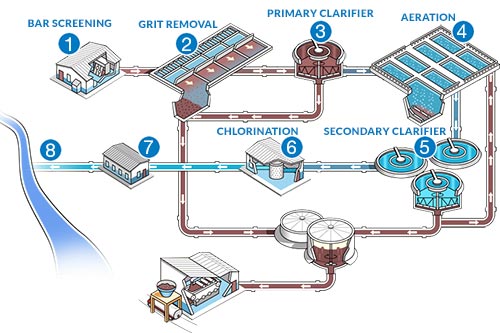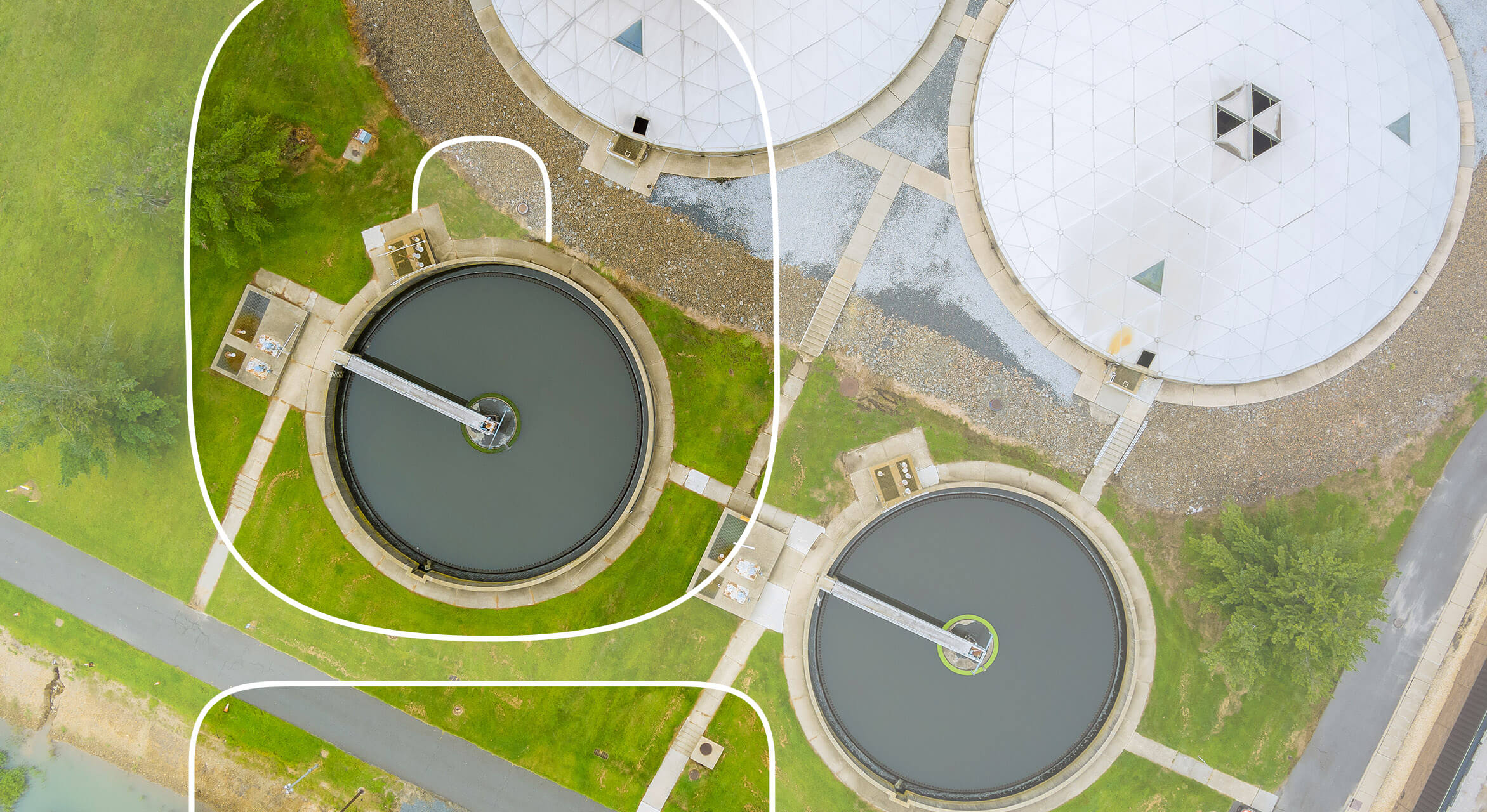How Wastewater Treatment Helps Enhance Resource Reuse Capabilities
How Wastewater Treatment Helps Enhance Resource Reuse Capabilities
Blog Article
Recognizing Wastewater Therapy Processes and Their Ecological Effect
The intricacies of wastewater treatment processes play a crucial role in mitigating ecological challenges associated with water contamination. Each stage, from initial to innovative therapies, is created to address particular pollutants, inevitably guarding both public wellness and water ecological communities.
Summary of Wastewater Therapy
Just how is wastewater changed right into a safe source for the environment? Wastewater therapy is an important procedure made to remove contaminants from made use of water, thus safeguarding public wellness and shielding communities. This process begins with the collection of wastewater from residential, industrial, and commercial resources, which is after that routed to therapy facilities.
At these facilities, different physical, chemical, and biological methods are used to deal with the wastewater. Consequently, biological treatments, such as turned on sludge procedures, make use of microorganisms to damage down natural issue.
The treated effluent can be securely discharged right into all-natural water bodies or recycled for irrigation and commercial objectives, promoting source conservation. In addition, the treatment process produces biosolids, which can be repurposed as plant foods or dirt amendments, further boosting sustainability.
Stages of Treatment Procedures
The wastewater treatment process normally includes 3 key phases: preliminary, primary, and second treatment. Each stage serves an unique role in decreasing the pollutant lots and making sure the effluent fulfills ecological standards before discharge.

The primary therapy phase concentrates on the physical separation of suspended solids from the wastewater. Via sedimentation, much heavier particles clear up at the end of sedimentation storage tanks, forming sludge, while lighter materials, such as oils and greases, float to the surface area and are skimmed off. This procedure significantly reduces the organic and not natural tons in the wastewater.
Second treatment is an organic procedure targeted at further decreasing the focus of organic matter. Numerous methods, including turned on sludge systems and dripping filters, utilize microorganisms to metabolize natural toxins. This phase is crucial for accomplishing the essential biochemical oxygen need (FIGURE) decrease, ultimately causing cleaner effluent all set for discharge or further treatment. Each stage is important in guarding environmental and public health.

Advanced Therapy Technologies
Adhering to the additional treatment processes, advanced therapy technologies play an important role in additional boosting the top quality of dealt with wastewater. These modern technologies are developed to remove recurring impurities that are not properly removed during key and additional therapies, making sure the effluent fulfills rigorous regulatory criteria.
Among the extensively used innovative therapy techniques are membrane purification, reverse osmosis, and advanced oxidation processes. Membrane layer purification, including microfiltration and ultrafiltration, works in separating fine particles, virus, and colloids from the water (Wastewater). Reverse osmosis makes use of semi-permeable membranes to get rid of dissolved solids, leading to top notch water suitable for various applications
Advanced oxidation processes (AOPs) use solid oxidants to break down natural pollutants, consisting of pharmaceuticals and personal care products that are resistant to traditional treatment. These approaches improve the biodegradability of intricate compounds, facilitating their removal.
An additional considerable technology is making use of biological nutrient removal processes, which particularly target nitrogen and phosphorus, protecting against eutrophication in getting water bodies. Generally, sophisticated therapy innovations are essential for achieving greater degrees of purification, promoting water reuse, and securing public my response health and wellness while attending to the challenges linked with wastewater monitoring.
Ecological Benefits of Therapy
Various environmental advantages emerge from reliable wastewater treatment processes that contribute to ecosystem wellness and sustainability. Primarily, these procedures dramatically reduce the launch of unsafe contaminants right into all-natural water bodies, which helps keep aquatic ecosystems. By removing pollutants such as heavy metals, nutrients, and virus, treated wastewater minimizes the danger of waterborne diseases and advertises biodiversity in marine atmospheres.
Additionally, wastewater therapy centers usually utilize advanced innovations that allow water recycling and reuse. This technique not only preserves freshwater sources however additionally minimizes the demand on natural water supplies. Improved nutrient removal from wastewater can likewise prevent eutrophication, a procedure that results in algal blossoms and subsequent oxygen deficiency in aquatic systems.
Furthermore, reliable treatment procedures can minimize greenhouse gas emissions, especially methane and laughing gas, which are typically launched during without treatment wastewater decay. By recording and using biogas from anaerobic digesters, centers can transform waste right into renewable resource, therefore adding to a reduction in fossil gas reliance.
Difficulties and Future Trends
While the environmental advantages of wastewater therapy are clear, a number of challenges continue that prevent optimum outcomes in this field. One significant concern is aging facilities, which usually leads to ineffectiveness and raised operational costs - Wastewater. Numerous therapy plants were made years ago, and their capabilities do not line up with contemporary needs, which include more stringent governing criteria and click site greater quantities of wastewater due to urbanization

Looking ahead, there is a growing focus on source healing and round economic situation principles within wastewater treatment. Technologies such as anaerobic digestion, which can create biogas, and advanced filtration modern technologies are acquiring traction. These techniques not only boost treatment efficiency however also advertise sustainability.
Eventually, attending to these challenges requires cooperation among stakeholders, financial investment in innovation, and a dedication to continuous study. By embracing these fads, the wastewater treatment industry can evolve to satisfy the needs of an altering setting and society.
Verdict
In verdict, wastewater therapy procedures play a vital role in enhancing environmental high quality and public health and wellness. The multi-stage therapy framework, coupled with advanced innovations, successfully alleviates air pollution and advertises lasting water monitoring.
Report this page